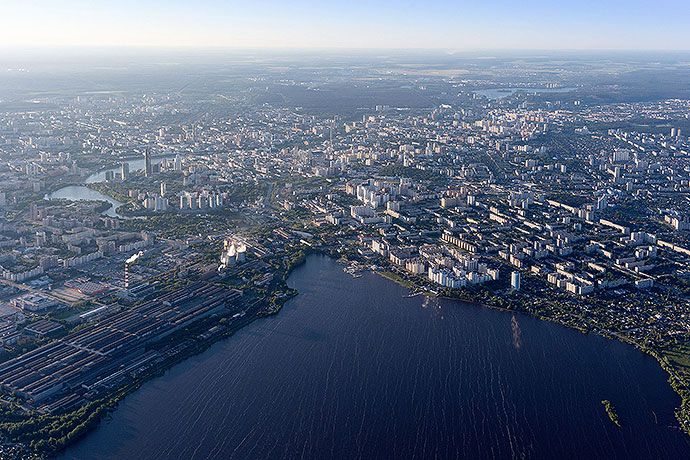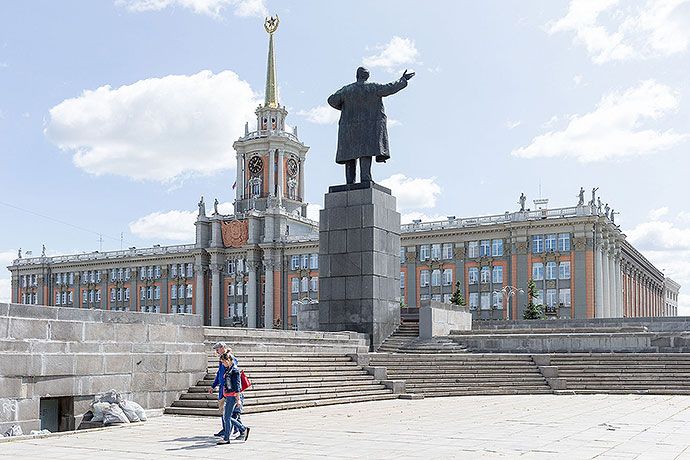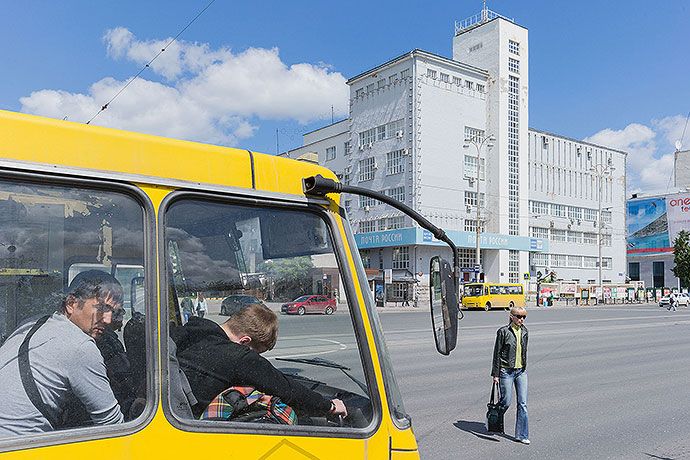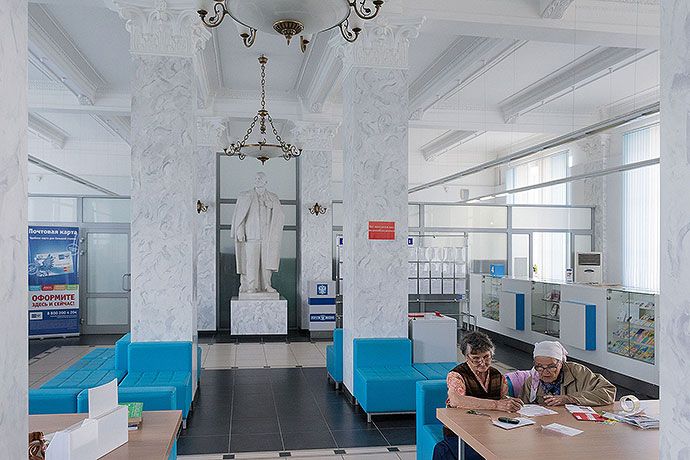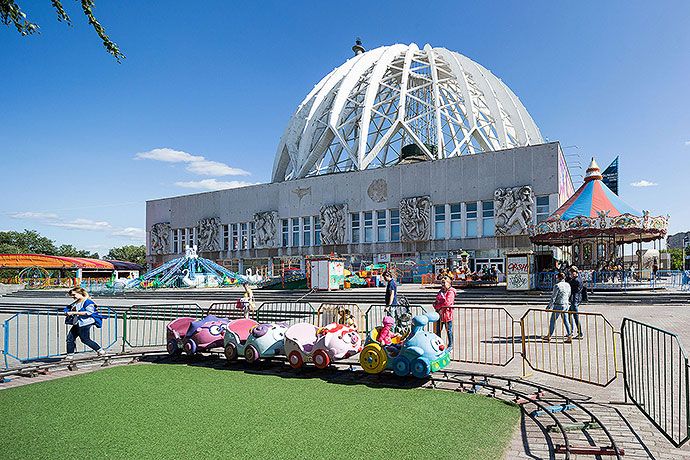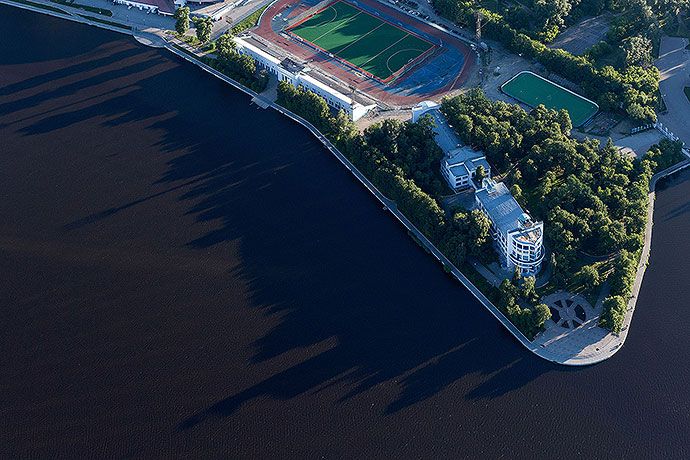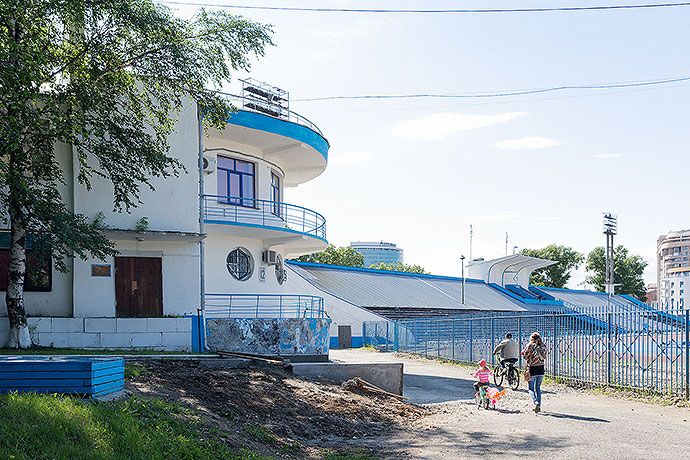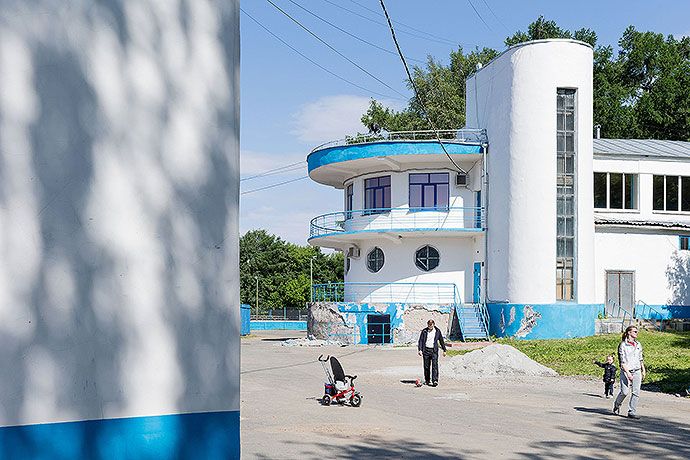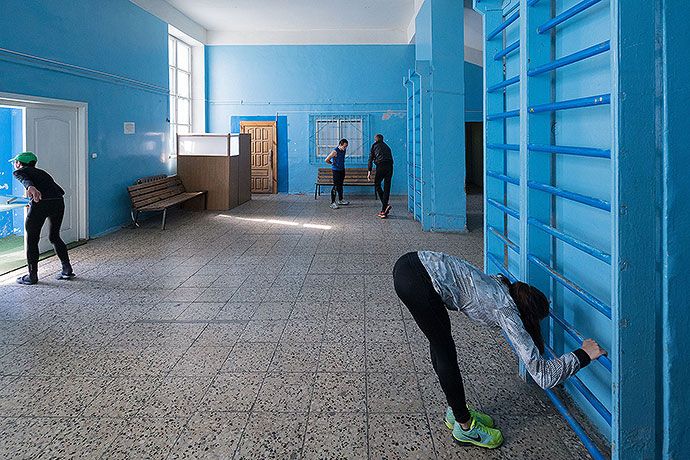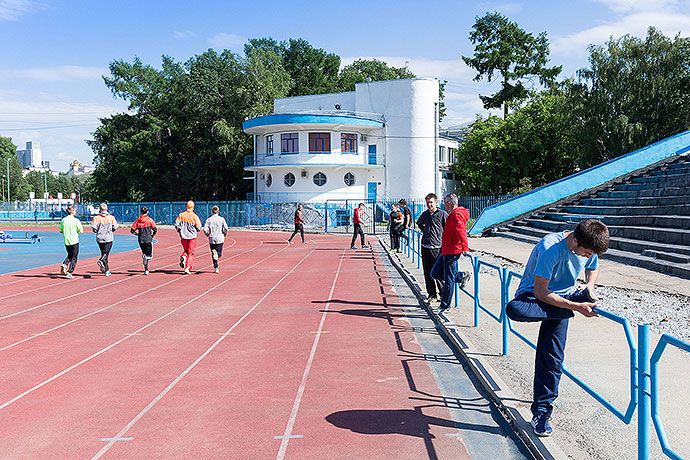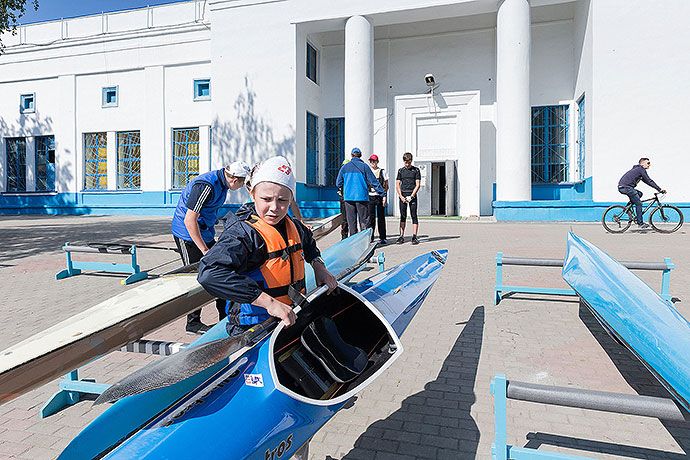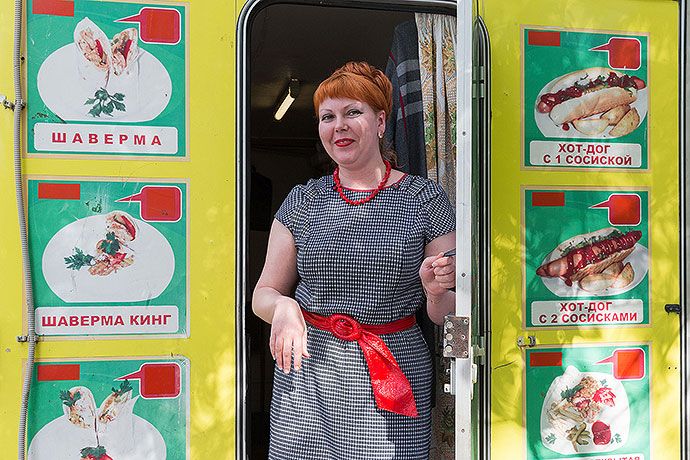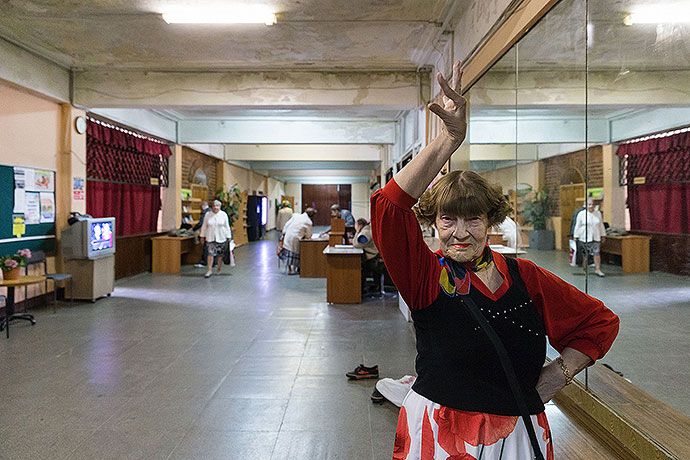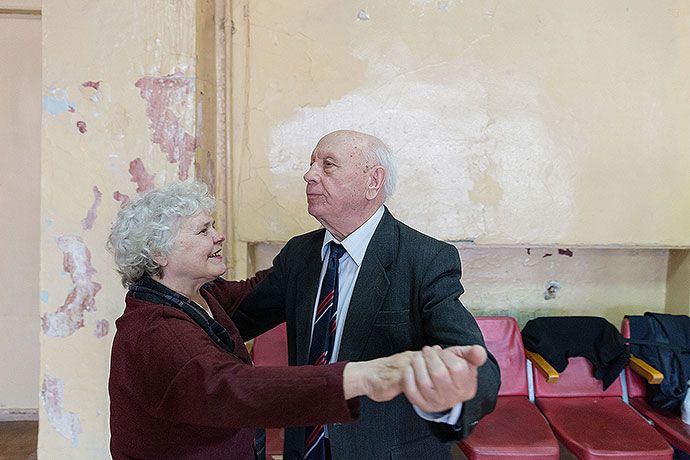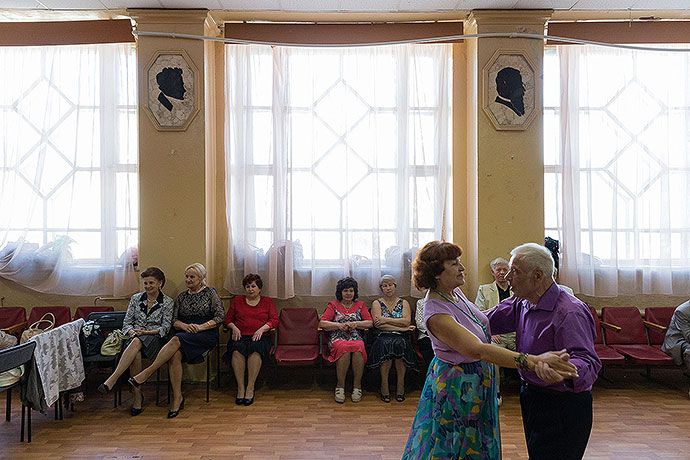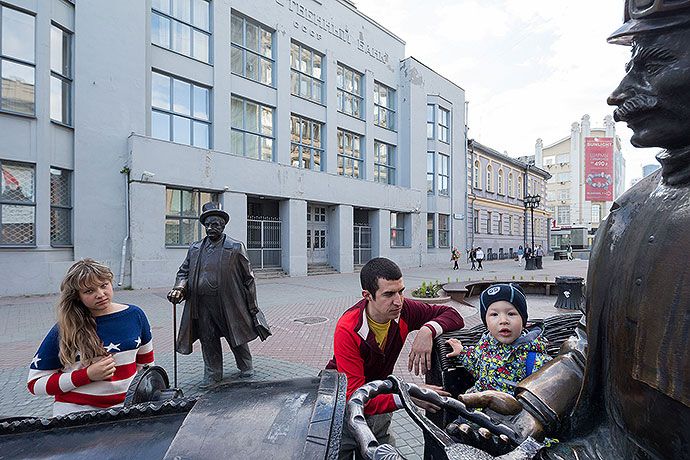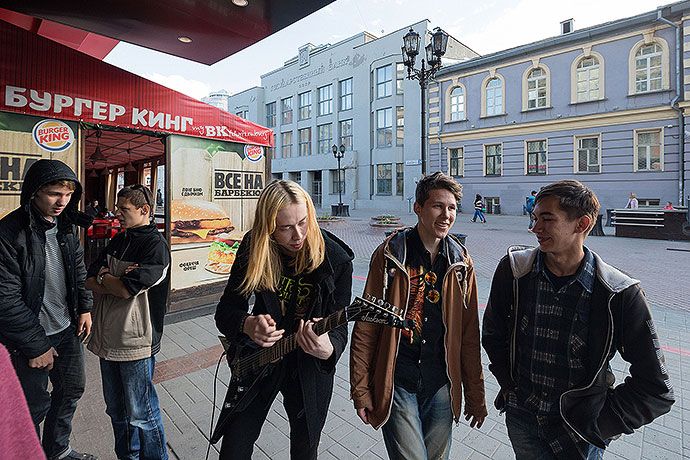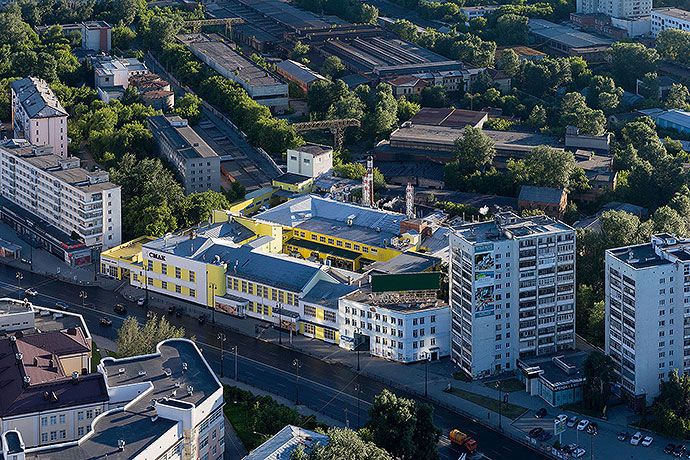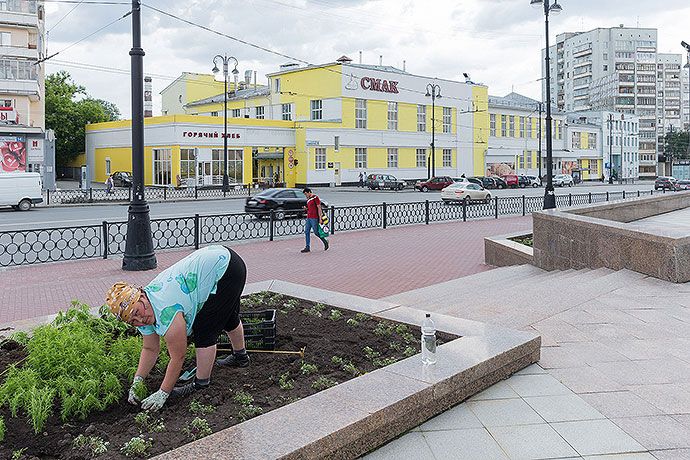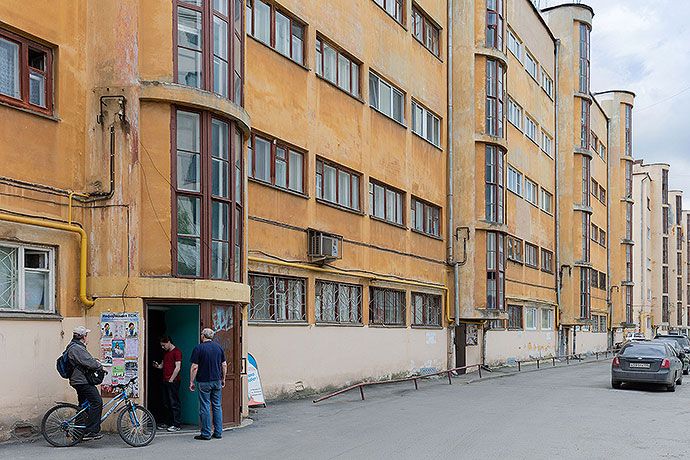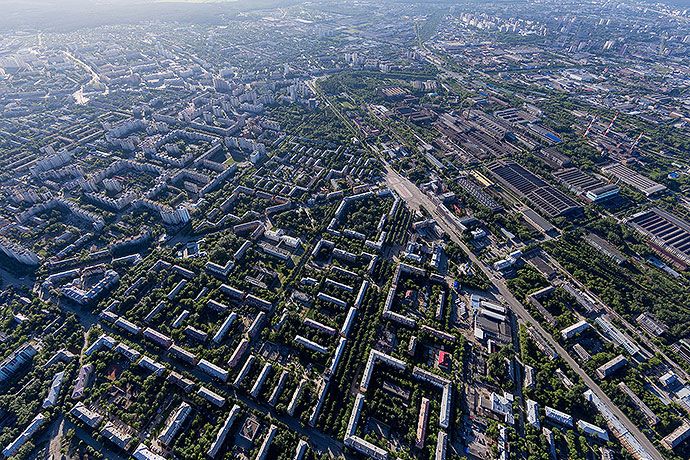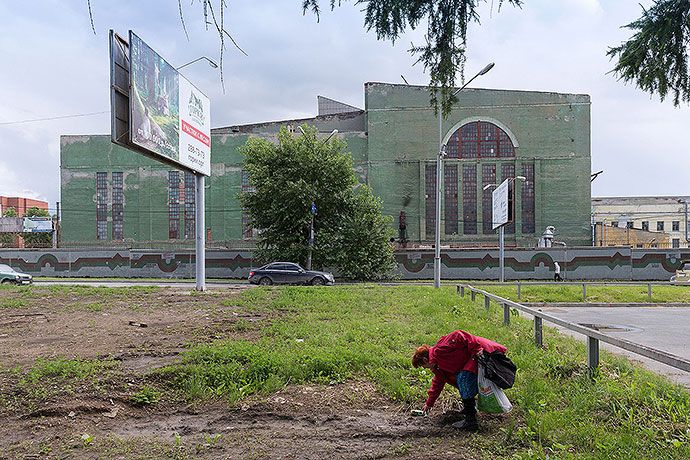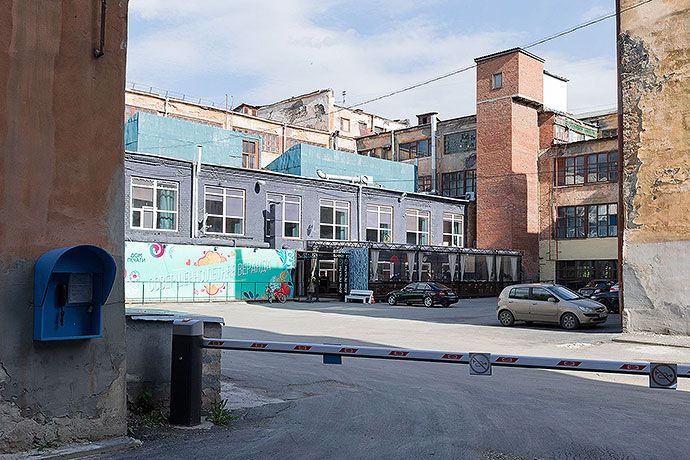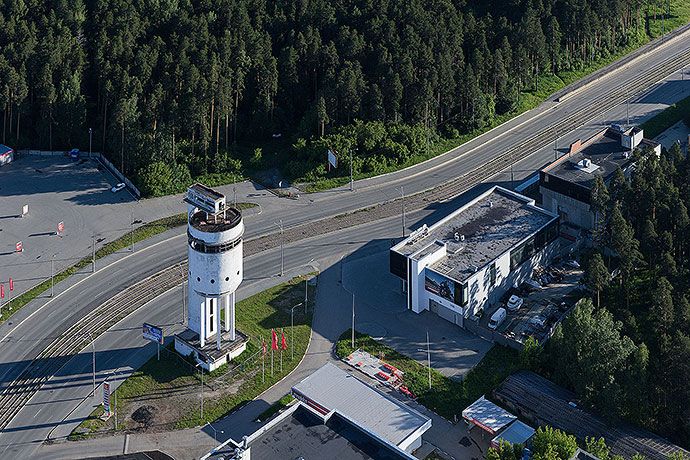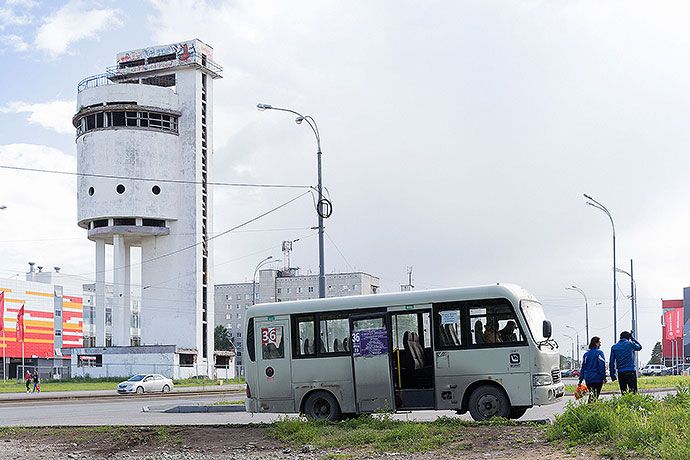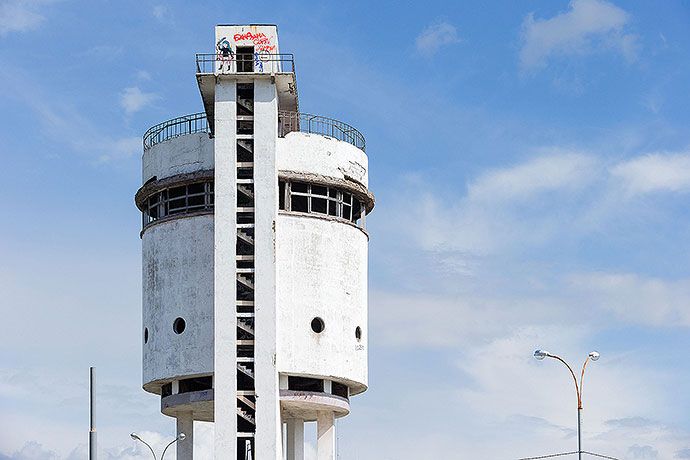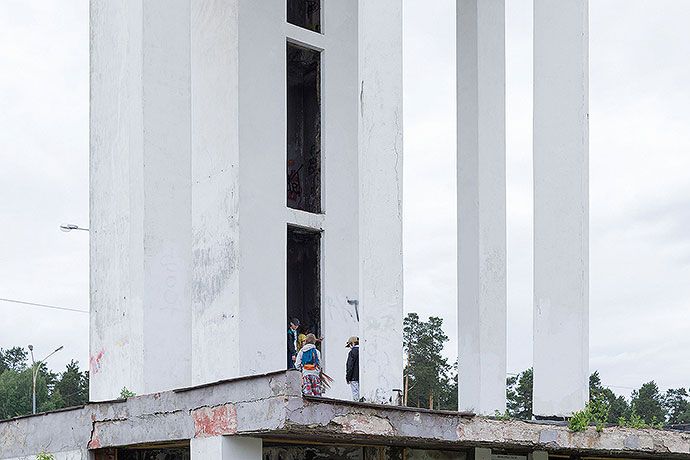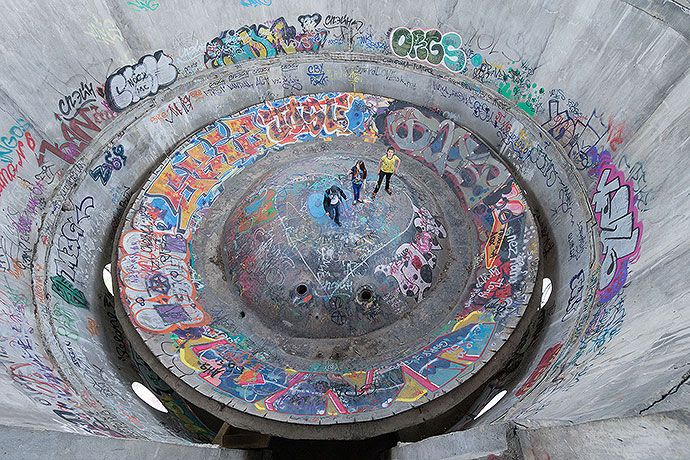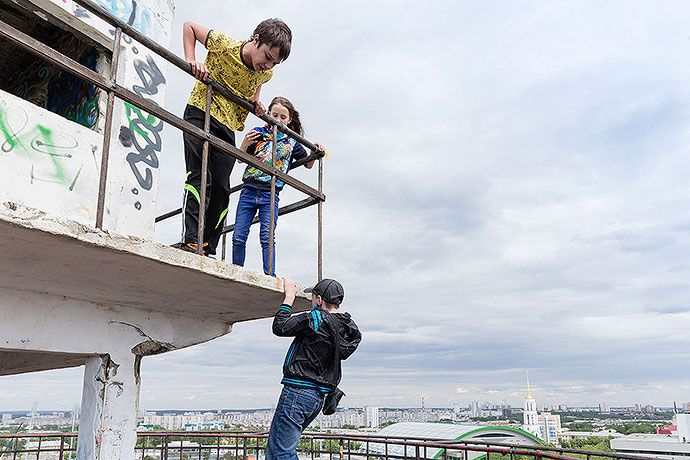Yekaterinburg – Moscow Biennale 2015
Nadezhda / Hope. Russian Industrial Cities Artistically Explored
Group Exhibition, part of Moscow Biennale of Contemporary Art
September 23 – October 31, 2015
Trekhgornaya Manufaktura, Moscow, Russia
In a region with a midnight sun and just two real hours of nighttime, there’s a certain soviet strangeness that lurks over the city. It took about three days before we could actually pronounce Y-e-k-a-t-e-r-i-n-b-u-r-g and a few more than that to wrap our heads around the city known as an open-air museum for constructivist architecture, a destination for mayonnaise production and place that houses the QWERTY Monument (Russia’s weirdest attraction) of a big white stone keyboard that rises from the earth.
In the Central Park of Culture and Leisure, children with Spider Man painted faces play hide-and-seek between Soviet-era statues and other crumbling ideological relics. Along the Iset River, costumed dance troupes occupy concrete jetties where they salsa and swing, offering a sampling of the creative prowess which the nation has offered the world over the years. Along the lively Lenina Avenue, in the tractor-shaped House of Communications, elderly ladies sort supermarket stamps, while their husbands sift through stacks of compact discs and DVDs.
The constructivist architecture was based on repetition: Designs that could be easily duplicated. Paired back, symmetrical and straight. Beauty, a thing of the past.
Yet today, to live in a constructivist building has become a thing of fashion amongst the Generation Y of E-burg. The most ideological form of architecture, now a symbol of Williamsburg-cool.
Constructivism was an artistic and architectural philosophy that was born in Russia in 1919. A time when the Tsarist autocracy was dismantled and the rise of the Soviet Union began, throughout the 1920’s, the Constructivists developed radical new forms of architecture, graphic design, film and photography. Constructivists rejected the idea of art being autonomous from the rest of society: to them, all art and design was a political tool. (The Russian Constructivists, October 2013)
Today, there is an eerie contradiction that lurks throughout Yekaterinburg’s constructivist buildings. On one hand, I could feel the sense of urgency that was in the construction of the buildings. The intention of control and confinement that the architecture was intended for, the lack of beauty, the monotone colours, the paired back, egalitarian aesthetic of the towers, homes, public spaces. The lack of freedom was also there too: homes and schools built in large complexes adjacent to the factories and offices so one would never have to leave their complex. Inhabitants didn’t even have to go outdoors as their homes were connected to a series of intertwined corridors or tunnels to the adjacent factories where they worked.
Yet today, there is an open lightness, a happiness in the city, where the buildings that were created under the umbrella of the most ideological form of architecture now offer a new sense of future-forwardness to a country still in transition.
